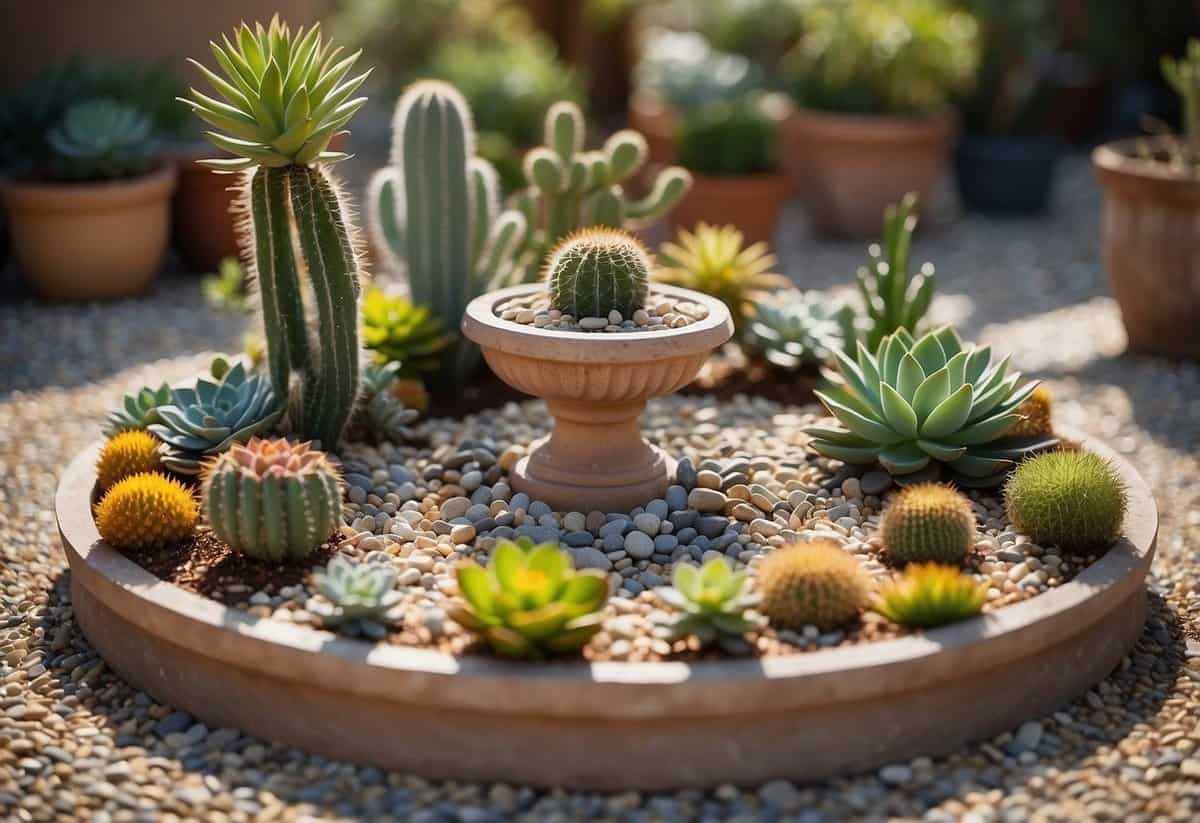Garden Ideas Where Grass Doesn’t Grow: Creative Solutions for a Beautiful Yard
Finding garden ideas for areas where grass won’t grow can be challenging. Whether your lawn has patches of stubborn soil or lacks sunlight, options are available to transform these spaces. You can create a beautiful and functional garden even without grass.

Not only will you enjoy a low-maintenance yard, but you also open up possibilities for creative landscaping. From decorative rock gardens to inviting outdoor seating areas, these ideas can turn your yard into a place of beauty and relaxation.
Understanding Soil Conditions

Knowing your soil’s condition is crucial for successful gardening. Poor soil health can hinder grass growth, making understanding and improving soil conditions essential.
Testing Your Soil
The first step is to test your soil. A soil test kit can help you determine the pH, nutrient levels, and texture. You’ll find kits at garden centers or through online retailers. pH levels indicate if the soil is acidic, neutral, or alkaline, which affects nutrient availability.
Follow the instructions on the kit for accurate results. Typically, you need to collect soil samples from different spots in your garden. Mix them together to get an average reading. Send it to a lab for detailed analysis if needed.
Understanding your soil’s nutrient levels helps you know what amendments are necessary. For instance, low nitrogen might require adding a fertilizer rich in that nutrient.
Improving Soil Health
Once you know your soil’s condition, improving it becomes easier. If your soil is too compacted, consider aeration. This process involves making small holes to let air, water, and nutrients penetrate deeper.
For soil that’s too acidic or alkaline, you can adjust the pH. Adding lime can reduce acidity, while sulfur helps lower alkalinity. Make sure to follow recommended amounts to avoid harming plants.
Incorporating organic matter like compost enhances nutrient content and improves drainage. Mulching also helps by retaining moisture and adding nutrients as it decomposes. You might want to use mulch in areas where grass won’t grow to maintain a neat appearance.
Using raised beds or container gardens can also aid if the soil is challenging to amend. They allow you to control soil conditions better, ensuring healthier plant growth.
Shade-Tolerant Plants

When grass won’t grow in your garden, shade-tolerant plants can be an excellent alternative. These plants thrive with minimal sunlight and can transform shady spots into lush green areas.
Ground Covers
Ground cover plants are perfect for shady areas where grass struggles. Common periwinkle is a popular choice, as it is hardy and spreads quickly. It grows well in shade and even in poor soil conditions. Another option is sweet woodruff. This plant has small white flowers and a pleasant fragrance, making it a lovely addition to any garden.
Hostas are also great for shaded ground cover. They come in various leaf colors and sizes, adding visual interest. Additionally, creeping Jenny can cover areas quickly with its bright green leaves, which offer a vibrant touch to shady spots.
Perennials That Thrive Without Grass
Certain perennials are well-suited for shaded gardens. Lenten roses, for example, grow up to 2 feet tall and are ideal for compact gardens. They tolerate deer, drought, and salt spray, making them low-maintenance. Another excellent choice is bleeding hearts, known for their heart-shaped pink flowers.
Astilbes are another shade-tolerant perennial that adds color with its feathery plumes. They come in shades of pink, red, purple, and white. Ferns are also great for shaded areas. They thrive without much sunlight and provide lush, green foliage throughout the season.
Using these plants can help you create a vibrant and inviting garden, even where grass won’t grow.
Using Mulch and Gravel

Using mulch and gravel can transform areas where grass won’t grow into beautiful and functional spaces. Both materials provide unique benefits and can easily fit into various landscaping designs.
Benefits of Mulch
Mulch helps retain soil moisture, keeping your plants hydrated longer. This is especially useful in dry areas or during hot weather. Mulch also suppresses weeds, which means less time spent weeding your garden.
Another advantage is temperature regulation. Mulch keeps roots cool in summer and warm in winter, protecting them from extreme conditions. It’s also a great addition to your garden’s aesthetics, available in different colors to match your design.
Finally, mulch breaks down over time, adding organic matter to your soil. This improves soil fertility and health, benefiting plants without needing chemical fertilizers.
Different Types of Gravel
Gravel is versatile and low-maintenance, making it an excellent choice for areas where grass struggles to grow. You can choose from various shades and sizes to complement your garden design.
Pea gravel is round and smooth, great for walkways and playgrounds. Crushed stone offers a rugged look and is perfect for driveways and drainage areas. River rock is larger and more polished, ideal for decorative purposes like dry river beds and accents around plants.
Gravel also promotes better drainage. It prevents water from pooling, reducing the risk of root rot in plants. Moreover, gravel surfaces are durable and can handle heavy foot traffic, making them ideal for paths and patios.
Incorporating mulch and gravel can turn bare patches into lovely, practical garden features.







